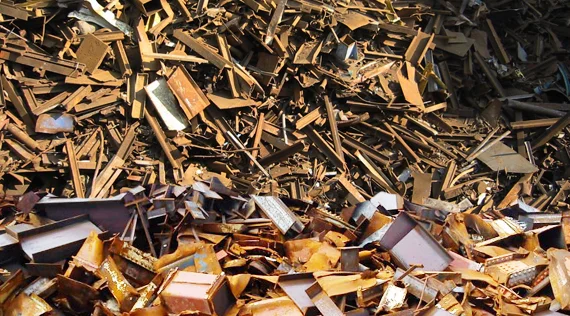Scrap Export Market Saw Several Shifts in 2022
Metal Recycling News | 2023-06-07 12:48:27
In the aluminum scrap export sector, India emerged as the single largest buyer of scrap from the U.S. last year, purchasing 459,000 metric tons of aluminum-bearing scrap.
SEATTLE (Scrap Monster): Year-end summaries of scrap metal export activity published by the Reston, Virginia-based United States Geological Survey (USGS) show several ways in which trading patterns changed for scrap recyclers last year.
The USGS summary of U.S. Commerce Department red metal scrap export data shows an export destination that thrived in 2020 and 2021—Malaysia—reduced its purchases from the U.S. last year.
While Malaysia purchased 176,000 metric tons of copper-bearing scrap from the U.S. in 2020 and 152,100 metric tons in 2021, its buyers received just 66,710 metric tons last year. That represents a 56 percent year-on-year drop in copper-bearing scrap purchases by the Association of Southeast Asian Nations (ASEAN) country. In just two years, the nation’s purchases from the U.S. declined by nearly 110,000 metric tons per year.
Many shippers in the U.S. have been unable or unwilling to comply with a new inspection procedure and purity standards imposed by a Malaysian government agency.
The policy is a curious one by the government. The People’s Republic of China for several years had an inspection policy and accompanying agency, the China Certification and Inspection Group (CCIC), that was widely unpopular with scrap exporters around the world. China’s government dropped the inspection regimen in late 2020, and subsequently its red metal scrap imports have rebounded.
With the U.S. remaining a copper scrap-surplus nation, where did the approximately 100,000 metric tons of scrap formerly accepted by Malaysia go in 2022?
One answer is neighboring Thailand. Buyers in that ASEAN country boosted their purchases 39 percent from 45,650 metric tons in 2021 to 63,480 metric tons last year. Metals traders in the U.S. and Asia say they know of several operators of both sorting and ingot plants in Malaysia and China who have invested to also have a foothold in Thailand.
Another answer lies in China itself. USGS figures show China (excluding Hong Kong) increased its purchases from the U.S. by 23 percent last year compared with 2021. While the nation’s buyers accepted 238,300 metric tons of copper-bearing scrap from the U.S. in 2021, it upped that figure by nearly 55,000 metric tons to 293,100 metric tons last year.
In the aluminum scrap export sector, India emerged as the single largest buyer of scrap from the U.S. last year, purchasing 459,000 metric tons of aluminum-bearing scrap.
That total outpaced Malaysia (390,000 metric tons), South Korea (295,000), Mexico (195,000), China (152,000), Canada (122,000) and Thailand (115,000).
Malaysia’s inspection policy likely played a role in India assuming that number one spot last year. In 2021, Malaysia held the aluminum scrap import crown, bringing in 520,000 metric tons of U.S. material. Its import volume thus dropped by 25 percent last year.
India had to grow by just 17,000 metric tons of U.S. imports last year to claim the number one spot after Malaysia’s precipitous fall. As with copper, Thailand benefited from the Malaysia decline, adding about 40,000 metric tons to its U.S. aluminum scrap import volume last year, according to USGS.
In the ferrous scrap export market, India was the story of 2022. India brought in 633,000 metric tons of U.S.-generated ferrous scrap in 2021 and then nearly tripled that total to about 1.74 million metric tons last year.
Only Turkey and Mexico purchased more outbound U.S. ferrous scrap than India last year. In 2021, India placed behind not only Turkey and Mexico, but also Malaysia, Vietnam, Taiwan, Bangladesh, Canada and South Korea.
Countries steeping away from the market include Pakistan, which reportedly has suffered a U.S. dollar shortage for several months running. Buyers in that nation dropped from receiving more than 400,00 metric tons of scrap from the U.S. in 2021 to just 277,000 metric tons last year, a decline of nearly 31 percent.
An ongoing shortage of U.S. dollars in that nation reportedly has it continuing to struggle to stay active in the U.S. scrap market, a condition that most affects shippers on the East Coast and Gulf Coast.
Also backing away from the U.S. ferrous scrap market last year was Vietnam, which buys predominantly from the West Coast. Buyers in the ASEAN country took in 681,000 metric tons of U.S. scrap last year, a drop of 52.7 percent from the 1.44 million metric tons they purchased in 2021.
Courtesy: www.cdrecycler.com
 By
By 